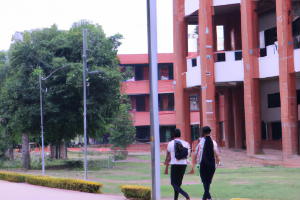India is a diverse country, renowned for its rich culture, history, and heritage. With a rapidly growing economy and a thriving education sector, India has emerged as a popular destination for international students seeking to study in Asia. While studying in India can be a rewarding experience, there are several opportunities and challenges that international students need to consider before deciding to pursue their education in India.
Opportunities
- World-Class Education: India has some of the best universities and institutions of higher education in the world, offering a wide range of courses in various disciplines, including engineering, medicine, law, humanities, and social sciences. India is home to several renowned institutions like the Indian Institutes of Technology (IITs), Indian Institutes of Management (IIMs), and All India Institute of Medical Sciences (AIIMS), which are considered among the top institutions in their respective fields.
- Affordable Tuition Fees: Compared to many other countries, the cost of education in India is relatively low. International students can expect to pay between $5,000 to $10,000 per year for undergraduate courses and between $7,000 to $15,000 per year for postgraduate courses.
- Cultural Diversity: India is a land of diverse cultures, traditions, and languages. International students can expect to have a unique and enriching experience, interacting with people from different backgrounds and experiencing the country's rich culture and heritage.
- Career Opportunities: With a booming economy and a thriving job market, international students have ample opportunities to pursue their careers in India. Many multinational corporations have set up their operations in India, providing a range of job opportunities for graduates.
Challenges
-
Language Barrier: While English is widely spoken in India, international students may face some language barriers, especially in rural areas where the local language is dominant.
-
Cultural Shock: The cultural differences between India and other countries may pose a challenge for international students. Adjusting to the local culture, food, and lifestyle can take time.
- Visa and Admission Process: The admission and visa process for international students can be lengthy and cumbersome process, requiring significant paperwork and documentation.
- Infrastructure: While India has several world-class institutions, the country's infrastructure may not be at par with other developed countries. Issues like frequent power cuts, lack of public transport, and poor internet connectivity may pose a challenge for international students.
Top Countries
According to recent data, the top countries from where international students come to India are:
- Nepal
- Afghanistan
- Bangladesh
- Sudan
- Bhutan
Admission and Visa Process
International students seeking admission to Indian universities and institutions of higher education must obtain a student visa from the Indian embassy or consulate in their home country. The visa application process typically involves submitting a range of documents, including academic transcripts, proof of financial resources, and a letter of admission from the university.
Once the student visa is approved, international students must register with the Foreigners Regional Registration Office (FRRO) within 14 days of arriving in India. The FRRO issues a residence permit, which is valid for the duration of the student's course.
In conclusion, studying in India can be a unique and rewarding experience for international students. While there are several opportunities, there are also some challenges that students need to consider before deciding to pursue their education in India. With the right preparation and support, international students can have a fulfilling and enriching educational experience in India.

